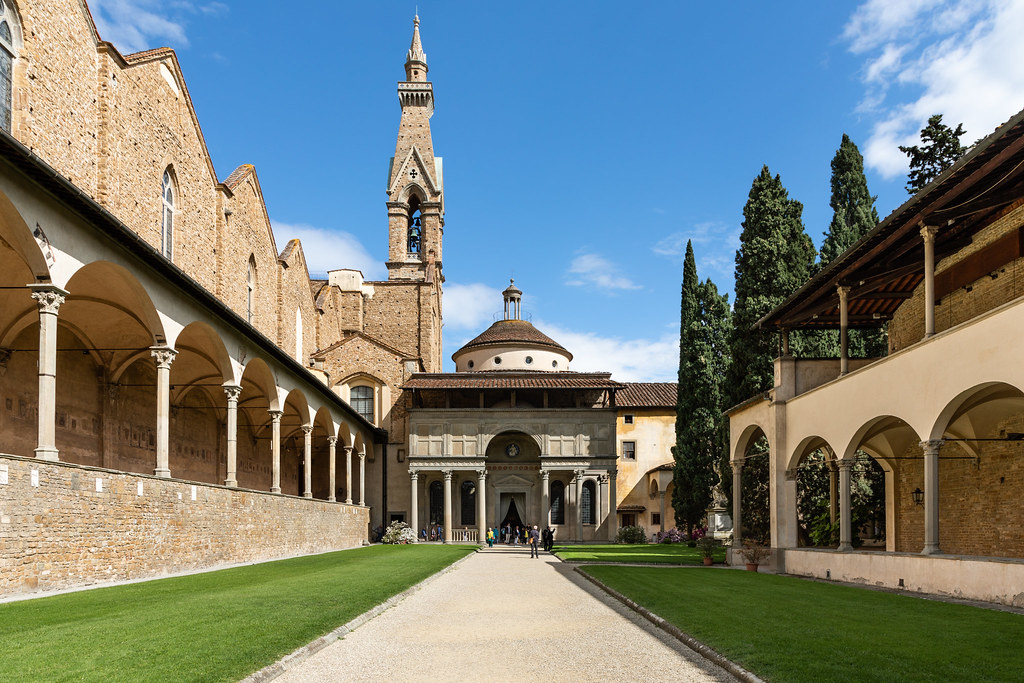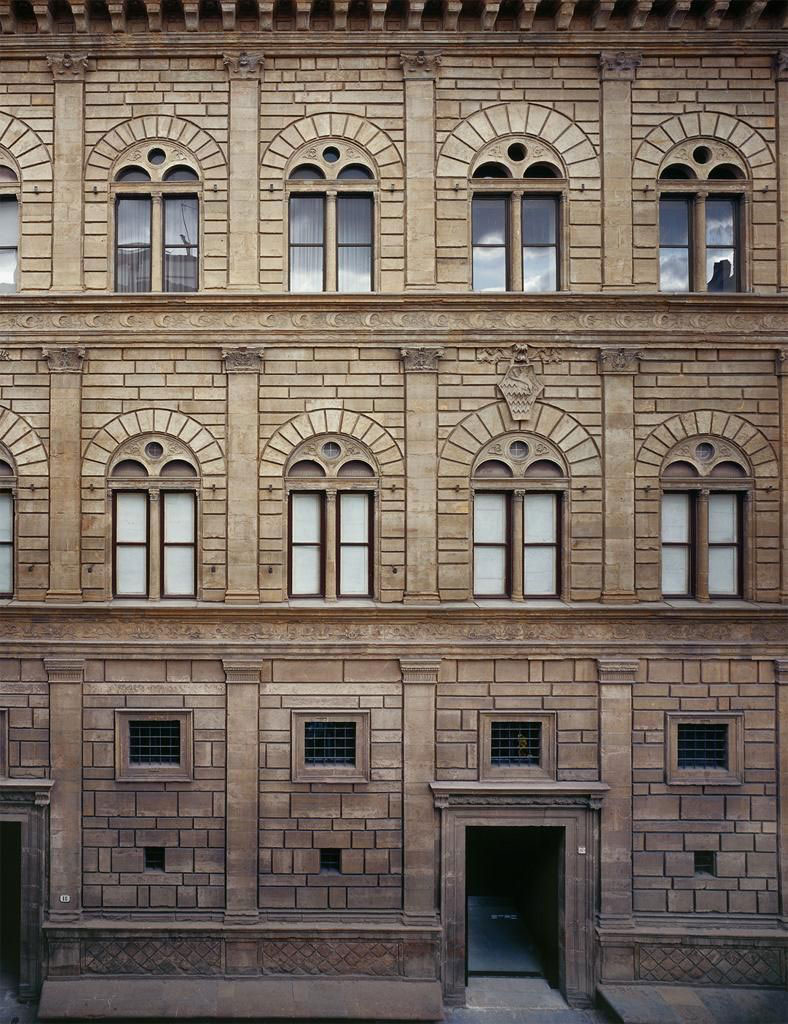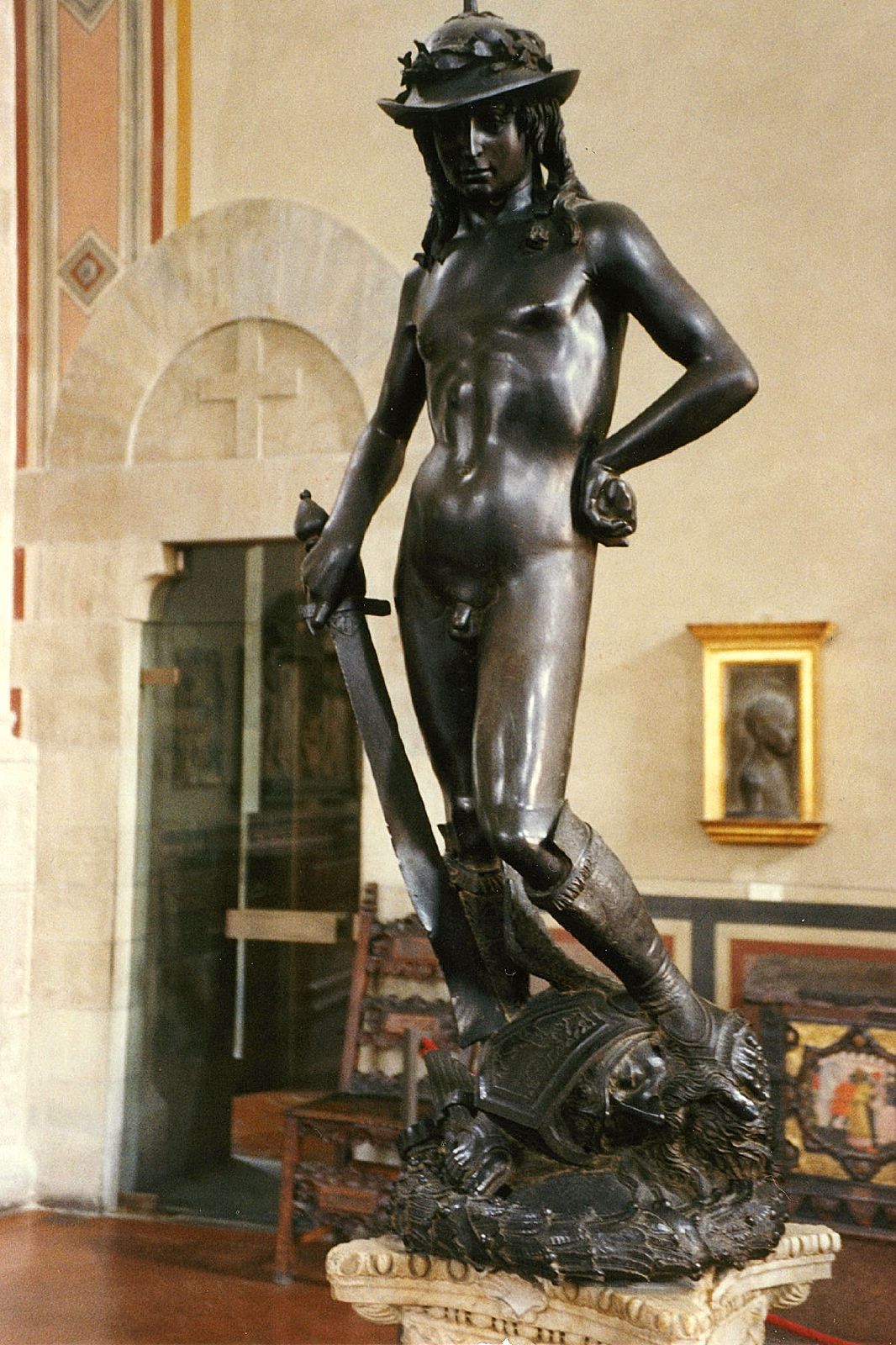Chapter 15: Early Renaissance in Italy: Fifteenth Century
Key Notes
- Time Period: 1400–1500
- Takes place in the courts of Italian city-states: Ferrara, Florence, Mantua, Naples, Rome, Venice, and so on.
- Culture, beliefs, and physical settings
- Renaissance art is generally the art of Western Europe.
- Renaissance art is influenced by the art of the classical world, Christianity, a greater respect for naturalism, and formal artistic training.
- Cultural interactions
- There are the beginnings of global commercial and artistic networks.
- Materials and Processes
- The period is dominated by an experimentation of visual elements, i.e., atmospheric perspective, a bold use of color, creative compositions, and an illusion of naturalism
- Audience, functions, and patron
- There is a more pronounced identity of the artist in society; the artist has more structured training opportunities.
- Theories and Interpretations
- Renaissance art is studied in chronological order.
- There is a large body of primary source material housed in libraries and public institutions.
Historical Background
- Italian city-states were controlled by ruling families who dominated politics
- These princes were lavish spenders on the arts, and great connoisseurs of cutting-edge movements in painting and sculpture.
- They embellished their palaces with the latest innovative paintings by artists such as Lippi and Botticelli.
- They commissioned architectural works from the most pioneering architects of the day.
- Princely courts eventually shifted from religious to secular concerns in a humanistic spirit.
- Humanism: an intellectual movement in the Renaissance that emphasized the secular alongside the religious.
- Humanists were greatly attracted to the achievements of the classical past, and stressed the study of classical literature, history, philosophy, and art
Patronage and Artistic Life
- The patrons of this time dictated the quantity of gold used on altarpieces and which family members were to be shown in paintings.
- Great families often had their own chapel in the local church.
- These churches' mysticism was enhanced by muralists.
- Quattrocento: the 1400s, or fifteenth century, in Italian art
Early Renaissance Architecture
- Renaissance architecture requires order, clarity, and light.
- Gothic churches' gloom, mystery, and sacredness were barbarous.
- Wide windows, minimal stained glass, and vibrant wall murals replaced it.
- Renaissance architecture emphasizes geometric designs, yet all buildings require mathematics to support their technical principles.
- Vitruvius' ideal proportions created harmony.
- Humanistic values were reflected in Florentine Renaissance church interior ratios and proportions.
- Unvaulted naves with coffered ceilings reminded Early Christianity.
- Thus, the crossing is twice the nave bays, the nave twice the side aisles, and the side aisles twice the side chapels.
- The nave is two-thirds arches and columns.
- As in Brunelleschi's Pazzi Chapel, the nave's white and gray marble floor patterns emphasize this logic.
- Alberti's Palazzo Rucellai and other Florentine buildings feature austere, three-story façades.
- The first level is usually for public use and business.
- A sturdy string course marks the ceiling and floor of the second storey, which rises light.
- Roman temple-style cornices top the third story.
- Mullion: a central post or column that is a support element in a window or a door
- Orthogonal: lines that appear to recede toward a vanishing point in a painting with linear perspective
➼ Pazzi Chapel
Details
- Designed by Filippo Brunelleschi
- Basilica di Santa Croce
- Designed 1423; Built 1429–1461,
- A masonry,
- Found in Florence, Italy
Form
- Two barrel vaults on the interior; small dome over crossing; pendentives support dome; oculus in the center.
- Interior has a quiet sense of color with muted tones that is punctuated by glazed terra cotta tiles.
- Use of pietra serena (a grayish stone) in contrast to whitewashed walls accentuates basic design structure.
- Pietra serena: a dark-gray stone used for columns, arches, and trim details in Renaissance buildings
- Inspired by Roman triumphal arches.
- Ideal geometry in the plan of the building.
Function
- Chapter house: a meeting place for Franciscan monks; bench that wraps around the interior provides seating for meetings.
- Rectangular chapel with an apse and an altar attached to the church of Santa Croce, Florence.
Attribution
- Attribution of portico by Brunelleschi has been recently questioned;
- The building may have been designed by Bernardo Rossellino or his workshop.
Patronage
- Patrons were the wealthy Pazzi family, who were rivals of the Medici.
- The family coat-of-arms, two outward facing dolphins, is placed at the base of each pendentive on the interior.
Image

➼ Palazzo Rucellai
Details
- Designed by Leon Battista Alberti
- c. 1450, stone,
- A masonry
- Found in Florence, Italy
Form
- Three horizontal floors separated by a strongly articulated stringcourse; each floor is shorter than the one below.
- Pilasters rise vertically and divide the spaces into squarish shapes.
- An emphasized cornice caps the building.
- Square windows on the first floor; windows with mullions on the second and third floors.
- Rejects rustication of earlier Renaissance palaces; used beveled masonry joints instead.
- Benches on lower level connect the palazzo with the city.
Function
- City residence of the Rucellai family.
- The building format expresses classical humanist ideals for a residence:
- the bottom floor was used for business;
- the family received guests on the second floor;
- the family’s private quarters were on the third floor;
- the hidden fourth floor was for servants.
Context
- The articulation of the three stories links the building to the Colosseum levels, which have arches framed by columns:
- the first floor pilasters are Tuscan (derived from Doric);
- the second are Alberti’s own invention (derived from Ionic);
- the third are Corinthian.
- Original building:
- Five bays on the left, with a central door.
- Second doorway bay and right bay added later.
- Eighth bay fragmentary: owners of house next door refused to sell, and the Palazzo Rucellai never expanded.
Patronage
- Patron was Giovanni Rucellai, a wealthy merchant.
- Rucellai coat-of-arms, a rampant lion, is placed over two second-floor windows.
- Friezes contain Rucellai family symbols: billowing sails.
Image

Fifteenth Century Italian Painting and Sculpture
- Linear perspective, which some experts believe the Romans used, is the most distinctive feature of Italian Renaissance art.
- In the early fifteenth century, Filippo Brunelleschi created perspective while sketching the Florence Cathedral Baptistery.
- Some painters were obsessed with perspective, presenting things and people in proportion, unlike medieval painting, which emphasized humans.
- Linear perspective was quickly adopted by pre-Traditional artists.
- The artists used trompe l'oeil to purposely deceive the viewer.
- Trompe l’oeil: (French, meaning “fools the eye”) a form of painting that attempts to represent an object as existing in three dimensions, and therefore resembles the real thing.
- By the end of the fifteenth century, portraits and mythical subjects had replaced religious paintings, expressing humanist ideas.
- Humanism and Greco-Roman classics revive interest in genuine Greek and Roman sculptures.
- Medieval painters saw old naked glory as heathen.
- Donatello's David begins the century-long renaissance of nudity in life-size sculpture in Florence.
- Increased anatomy study leads to nudity.
- Nude sketches of heroes are cast in stone and metal.
- Some painters display tremendous physical interplay of shapes in their twisting motions and straining muscles.
- Bottega: the studio of an Italian artist
- Perspective: depth and recession in a painting or a relief sculpture.
- Objects shown in linear perspective achieve a three-dimensionality in the two-dimensional world of the picture plane.
- Lines, called orthogonals, draw the viewer back in space to a common point, called the vanishing point.
- Paintings, however, may have more than one vanishing point, with the orthogonals leading the eye to several parts of the work.
- Landscapes that give the illusion of distance are in an atmospheric or aerial perspective.
➼ Madonna and Child with Two Angels
Details
- Painted by Fra Filippo Lippi
- c. 1465
- Tempera on wood
- Found in Uffizi, Florence
- Madonna: the Virgin Mary, mother of Jesus Christ
Content and Symbolism
- Symbolic landscape
- Rock formations symbolize the Christian Church.
- City near Madonna's head is the Heavenly Jerusalem.
- Pearl motif: seen in headdress and pillow as products of the sea.
- Pearls used as symbols in scenes of the Incarnation of Christ.
Context
- Mary is seen as a young mother.
- Model may have been the artist’s lover.
- Landscape inspired by Flemish painting.
- Scene depicted as if in a window in a Florentine home.
- Humanization of a sacred theme; there is a sense of domestic intimacy.
- Lippi was a monk, as indicated by the word “Fra” that precedes his name; he was working in a Carmelite monastery under the patronage of the Medici.
Image

➼ Birth of Venus
Details
- Painted by Sandro Botticelli
- c. 1484–1486
- Tempera on canvas
- Found in Uffizi, Florence
Form
- Crisply drawn figures.
- Landscape flat and unrealistic; simple V-shaped waves.
- Figures float, not anchored to the ground.
Content
- Venus emerges fully grown from the foam of the sea with a faraway look in her eyes.
- Roses scattered before her; roses created at the same time as Venus, symbolizing that love can be painful.
- On the left: Zephyr (west wind) and Chloris (nymph).
- On the right: handmaiden rushes to clothe Venus.
Context
- Medici commission; may have been commissioned for a wedding celebration.
- Painting based on a popular court poem by the writer Poliziano, which itself is based on Homeric hymns and Hesiod’s Theogony.
- A revival of interest in Greek and Roman themes can be seen in this work.
- Earliest full-scale nude of Venus in the Renaissance.
- Reflects emerging Neoplatonic thought.
- Neoplatonism: a school of ancient Greek philosophy that was revived by Italian humanists of the Renaissance
Image

➼ David
Details
- Sculpted by Donatello
- c. 1440–1460
- Made of bronze
- Found in National Museum, Bargello, Florence
Form
- First large bronze nude since antiquity.
- Exaggerated contrapposto of the body.
- Sleekness of the black bronze adds to the femininity of the work.
- Androgynous figure; homoerotic overtones.
Function
- Life-size work, probably meant to be housed in the Medici palace courtyard; not for public viewing.
Content
- The work depicts the moment after David slays the Philistine Goliath with a rock from a slingshot; David then decapitates Goliath with his own sword.
- David contemplates his victory over Goliath, whose head is at his feet; David’s head is lowered to suggest humility.
- Laurel on David’s hat indicates he was a poet; the hat is a foppish Renaissance design.
Context
- David symbolizes Florence taking on larger forces with ease; perhaps Goliath would have been equated with the Duke of Milan.
- Nothing is known of its commission or patron, but it was placed in the courtyard of the Medici palace in Florence.
- Modern theory alleges that this is a figure of Mercury, and that the decapitated head is of Argo;
- Mercury is the patron of the arts and merchants, and therefore an appropriate symbol for the Medici.
Image
